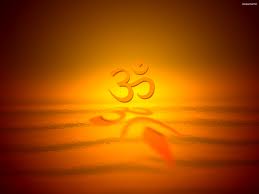Meditation - Using Mantra Or Sound
Mantras are words, phrases, or syllables which are
chanted thoughtfully and
with focused attention
Mantra meditation involves chanting a word or phrase until the mind and emotions are transcended and the higher consciousness is clearly revealed and experienced.
As the mind wanders so much, the music and rhythm of a mantra easily rescue the mind and brings it back to the object of one’s meditation.
Both the rhythm of it and the meaning of the mantra combine to guide the mind safely back to the point of meditation the higher consciousness or the specific spiritual focus.
Typical mantrams are: Aum, meaning Spirit, the Word of God, which creates, preserves, and transforms; or the Tibetan Buddhist mantram
Aum Mani Padme Hum
which usually is translated as “Om the jewel is in the Lotus Hum;” or the Hindu mantram
Om Namah Shivaya
which is generally translated as “I bow to Shiva.” Shiva is the supreme reality, the inner Self. It is the name given to consciousness that dwells in all. Shiva is the name of your true identity- your self.
Meditation with sound
Generally, mantra meditation involves chanting out loud at first until there is calm of body, emotions and mind become serene for meditation. Then whisper meditation almost automatically occurs and the life force begins to withdraw inward from “out-loud” chanting to whisper chanting. In whisper chanting the prana, the life force in the body, is balanced and harmonized, preparing the way for a deeper state of serenity and of the balance of mind and emotions.
Whisper chanting easily dissolves and the life force moves even deeper within as you enter mental chanting. Mental chanting is practiced as long as thoughts are occurring to the mind. Whenever the mind is distracted, the mantra is simply chanted in the same area of the mind that the distraction is occurring. The mantram always wins if given a chance.
As the mantra frees you from one thought, then another, and also helps to dissolve distractions, the mantra then begins to reach the border of superconsciousness.? Chanting becomes effortless. No effort, nor warding off distractions, is needed. Chanting becomes a pleasure. Peace and gentle joy fill your mind.
Gayatri Mantra
There is a famous prayer in Sanskrit that first appears in the Rig Veda (iii /62/10) called thegayatri mantra that almost every Hindu knows. In roman letters it is as follows:
Om bhur bhuvah svah
tat-savitur varenyam
bhargo devasya dhimahi
dhiyo yo nah pracodayat
|
 |
|
Gayatri in Devanagari letters
|
Gayatri is actually the name for a Sanskrit poetical meter that contains three lines of eight syllables each. There are, therefore, many gayatri mantras, but this particular one is the oldest and most well known of all gayatri mantras. In Hinduism, all Gods and Goddesses have a gayatri mantra associated with them. There is a gayatri for Ganesha, one for Shiva, one for Durga, one for Vishnu, one for Lakshmi, and so on. Most people are unaware of this fact and when Hindus talk about the gayatri mantra they mean thee gayatri mantra shown above, which is addressed to Savitri, the sun. The first line: om bhur bhuvah svahthat you see above is not actually part of a gayatri mantra. It is a special utterance called vyahriti that has been added to the beginning of this famous gayatri . This vyahriti is important in and of itself. The three lines of this gayatri mantra are:
- tat-savitur varenyam.
- bhargo devasya dhimahi, and
- dhiyo yo nah pracodayat


Comments (0)